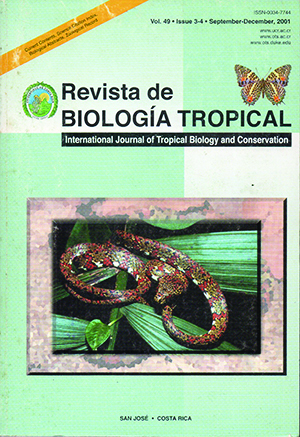Abstract
We present a key to the Costa Rican species of Pseudostigmatidae, comprising three genera with the following species: Megaloprepus caerulatus, Mecistogaster linearis, M. modesta, M. ornata and Pseudostigma aberrans. Pseudostigma accedens, which may occur in the region, is also included. For each species we give a brief account of morphology, phenology and life zone preferences, including distributional maps based on more than 270 records. These are not all of the known specimens from the area, but a high enough number to give a relatively good picture of the distribution and status of the species. We found M. caerulatus to be active during the first half of the year in seasonal, tropical semi-dry lowland forest and tropical moist forest at mid-elevation, but like M. linearis, M. caerulatus was active all year round in non-seasonal, tropical wet lowland forest and tropical moist forest at mid-elevation. Mecistogaster modesta also flew year round in non-seasonal, tropical wet lowland forest and tropical moist evergreen forest at mid-elevation, and likewise in seasonal and non-seasonal, tropical premontane moist forest. Only a few findings, however, have been made of M. modesta in seasonal, tropical semi-dry deciduous forest and seasonal, tropical moist evergreen forest. Mecistogaster ornata was missing entirely from non-seasonal, tropical wet lowland forest and non-seasonal, tropical moist forest at mid-elevation, while this species was active year round in seasonal, tropical dry lowland forest and tropical semi-dry forest, as well as in seasonal, tropical moist evergreen forest and tropical premontane moist forest, both at mid-elevation. Pseudostigma aberrans has so far been found too few times in Costa Rica for any indication of flight time preference.
##plugins.facebook.comentarios##

This work is licensed under a Creative Commons Attribution 4.0 International License.
Copyright (c) 2001 Revista de Biología Tropical
Downloads
Download data is not yet available.


